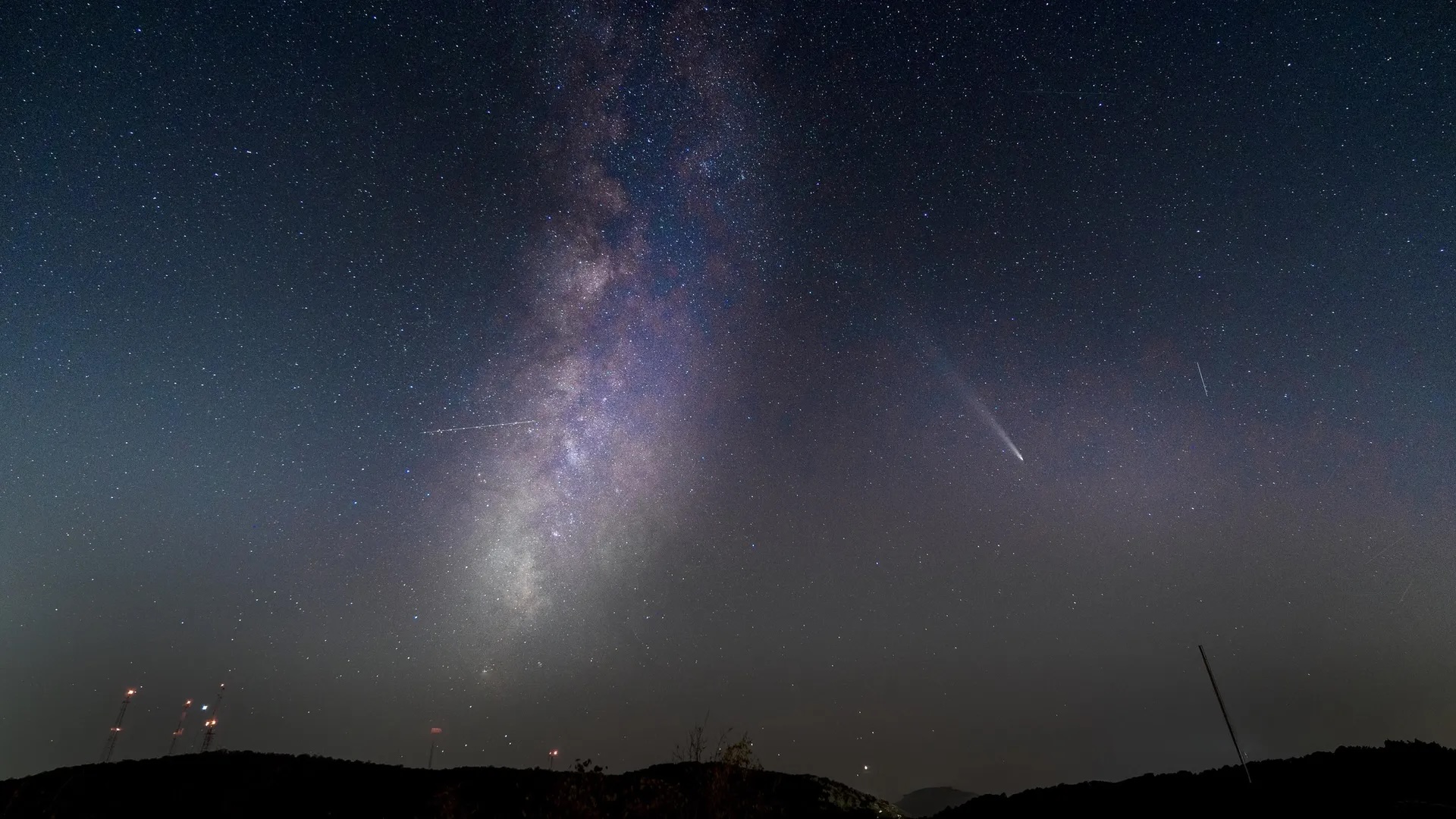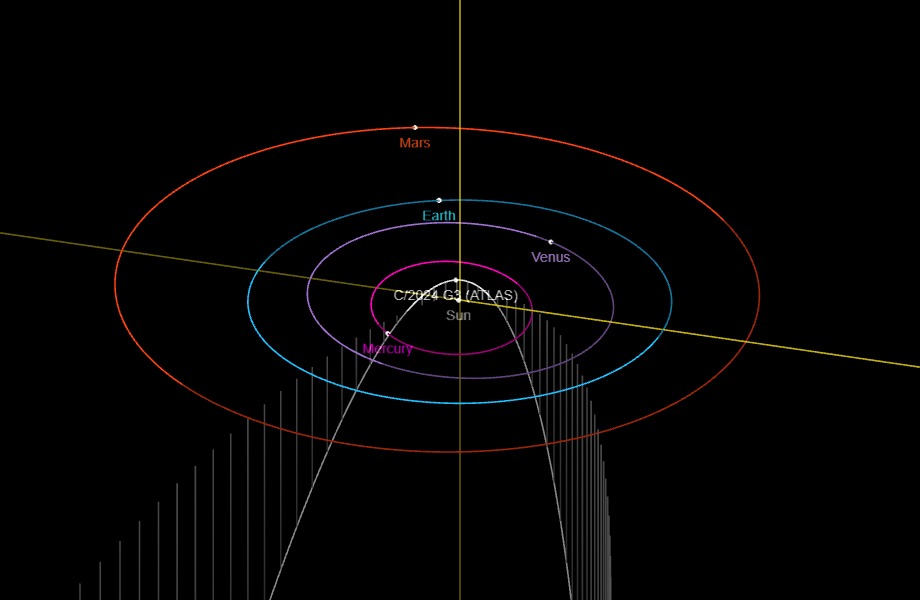Rare comet could shine bright as Venus as it falls toward the sun: What to expect from Comet ATLAS (C/2024) G3
Comet ATLAS (C/2024) G3 is set to dazzle Southern Hemisphere skywatchers in mid-January. Here’s everything you need to know about the 'New Year comet'.

In the second week of January, we could see a new object grace the skies as comet ATLAS (C/2024) G3 gets close to the sun.
In the wake of comet C/2023 A3 (Tsuchinshan–ATLAS) in October, comet G3 is due to reach perihelion — its closest to the sun — on Jan. 13, 2025. That day, this icy visitor to the inner solar system will get to within just 8.3 million miles (13.5 million kilometers) from the sun.
For context, Mercury orbits the sun from as close as 29 million miles (47 million kilometers). Jan. 13 will also see comet G3 closest to Earth, so at its brightest as seen from our planet.
Although comet C/2024 G3 could be the brightest comet of 2025, it's only likely to become a naked-eye object to observers in the Southern Hemisphere. According to The Planetary Society, comet G3 could get as bright as magnitude -4.5, about the same brightness as Venus during January 2025. It will be in the constellation Sagittarius.
Related: 12 trippy objects hidden in the zodiac constellations
However, the comet's unusually close journey to the sun makes its survival questionable. In its favor is the fact that its orbital path suggests that it visited the inner solar system about 160,000 years ago, so it may have survived a close pass before. "It will be strongly heated and may not survive," said Nick James, director of the British Astronomical Association's comet section. "But if it does, it may be an impressive object in the evening sky from the southern hemisphere after perihelion."

If it does get through its perihelion unscathed, comet G3 is likely to be about as bright as Venus in the west in the post-sunset sky after Jan. 13 from the Southern Hemisphere. However, James also said that the comet's closeness to the sun means that observing it could be dangerous and that it "should only be attempted if you are an experienced observer."
Sign up for the Live Science daily newsletter now
Get the world’s most fascinating discoveries delivered straight to your inbox.
There will also be some interference by moonlight around the time of comet G3's perihelion. A bright moon will be in the eastern sky in the few evenings before January's full "Wolf Moon," which on Jan. 13 will rise opposite the comet on the eastern horizon. That may make observations a bit more difficult, though with the moon rising about 50 minutes later each night after the full moon phase, conditions will quickly improve for post-sunset viewing.
Discovered on Apr. 5, 2024, by the Asteroid Terrestrial-impact Last Alert System (ATLAS) system of telescopes, G3 comes from the Oort Cloud, a sphere of comets that encircles the entire solar system.
Originally posted on Space.com.

Jamie Carter is a freelance journalist and regular Live Science contributor based in Cardiff, U.K. He is the author of A Stargazing Program For Beginners and lectures on astronomy and the natural world. Jamie regularly writes for Space.com, TechRadar.com, Forbes Science, BBC Wildlife magazine and Scientific American, and many others. He edits WhenIsTheNextEclipse.com.











